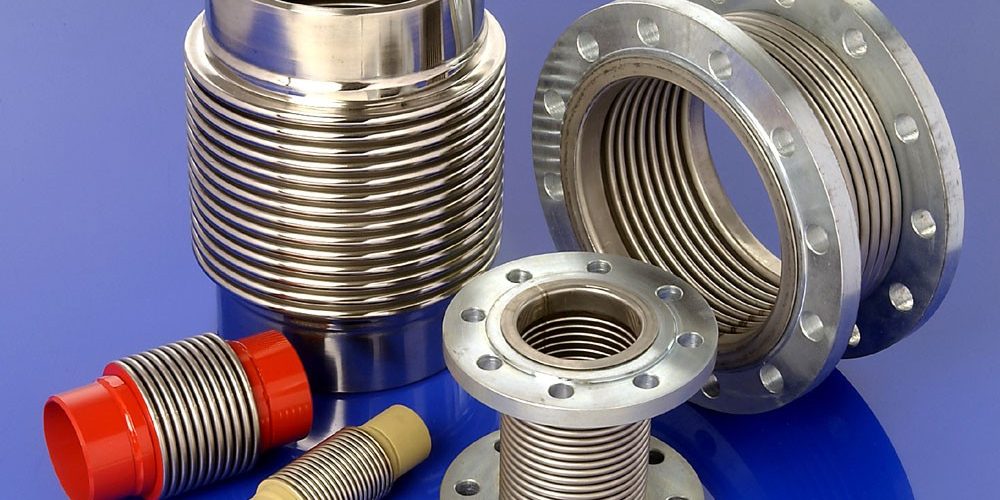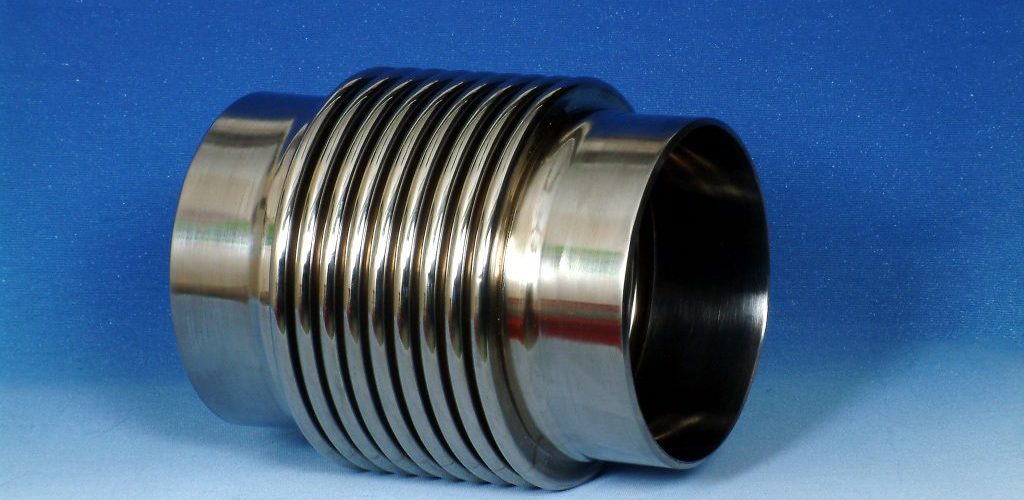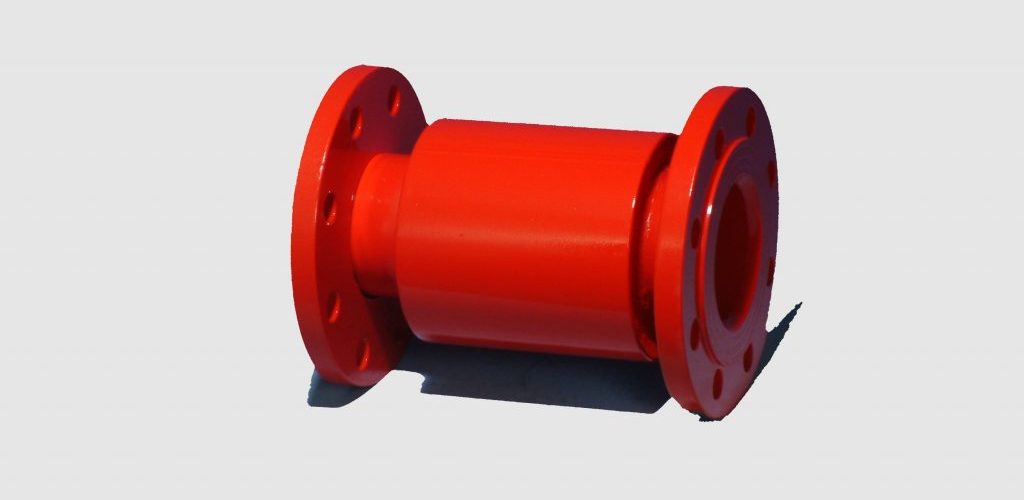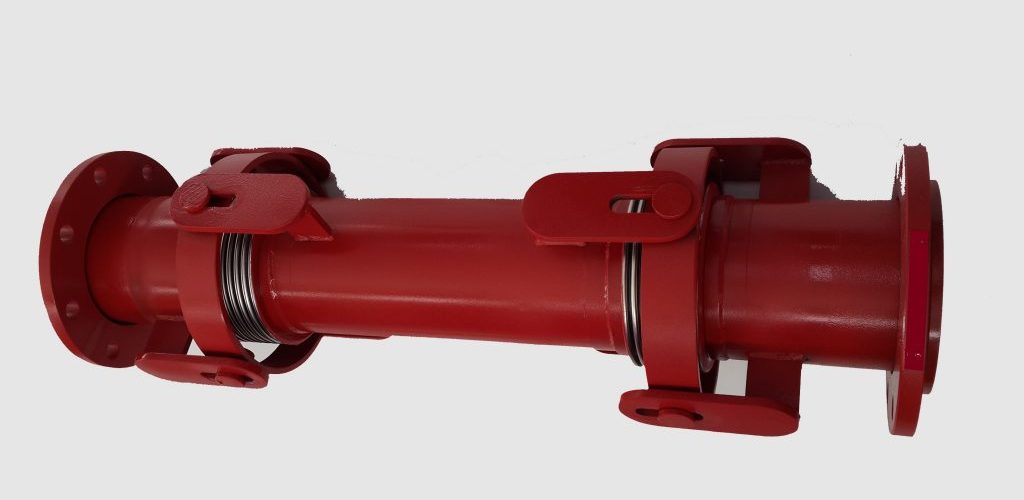The flexible metal bellows parts, which carry hot or cold fluids, or which are exposed to high temperature changes in the environment, eliminate the dimensional change caused by heat-related expansion or shrinkage are called “EXPANSION JOINT”.
The intended use of expansion joints ; to solve the thermal expansion and vibration problems of pipelines. Expansion joints with flexible structure of the thermal expansion and vibrations of pipes by taking the relief of the pipelines. The rigidity of the corrugated part of the expansion joint is minimal and negligible compared to the pipeline. Therefore, expansion joints are called “zero load” elements. The stresses arising from the thermal expansion of the pipeline are compensated by undulations.
Expansion joint bellows have a life span of 1000 cycles if they work in the permissible amount of travel.
Factors affecting the service life of the expansion joints are as follows;
- Temperature
- Movement
- Presetting
- Stress cycle frequency
- Value of operating pressure
- Pressure shock and increased pressure
- Thermal shock
- Installation quality
- Corrosion
The application areas of the expansion joints are very wide. It is widely used in pipelines, thermal pressure vessels, transport and transportation industries. Expansion joints are produced to absorb the various movements of the pipes carrying all kinds of material at each diameter, at every pressure and temperature.
Flanged Connection: In standard production, flanges are used in 16 atu pressure category according to DIN 2501 standards. Optionally, ANSI, BS standards and different pressure stages, if required, special material can be manufactured from flanges.
The connection of the flanges to the expansion parts depends on the user’s request and working conditions;
- Floating flanged
- Fixed flanged
- It is made of flange with weld end.
Welded Connection: It is done in places where welded manufacturing is not a problem and where the pipeline is welded. The disadvantage is that the current compensator is removed and removed.
Threaded Connection: Heating installation of multi-storey high-rise buildings are common and decorative type compensators which are widely used for pipe contraction and expansion, sound insulation and pipe curvature in column lines.
Grooved Connection: Grooved pipe connections provide ease of use where welded manufacturing is not possible. Since parts can be easily removed and removed, it can be partially intervened in the points required in the installation and in the applications for protection of the installation from the earthquake.
Other Accessories of Expansion Parts
- Shim
- Protective bends
- Limit rods
Shim must be used in the following cases.
- If the friction losses of the fluid are to be reduced,
- If the fluid velocity is too high and causes the bellows to vibrate at resonance values,
- If there is a catalyst or a highly acidic environment, there is a risk of erosion,
- If reverse current occurs,
- In cases where the temperature of the fluid is too high, the bellows should be protected from direct temperatures and their physical properties must be protected.
These movements can be summarized as follows;
- Axial movements
- Lateral movements
- Angular movements
- Combined movements
- Vibrations of system dynamics
Correctly selected and assembled, a compensator has the following characteristics.
- Pressure and vacuum resistant
- Temperature resistant
- Long-term service
- Rust-free
- Maintenance free
- Economic
The main component of the compensator is the flexible undulating section. The wall thickness, pitch, height and other structural features of the corrugation material are designed as a combination of pressure, temperature, expansion, vibration and fluid properties in the operating conditions of the pipeline. Cr-Ni austenitic stainless steel is mostly used as an alloying material. The biggest feature of this material is the liği cold working en feature which causes the pour point to rise as it works.
If the operating pressures are too high and certain flexibility is taken, multi-layer corrugation is applied. Stresses are less in multi-storey bellows than single-layer bellows. Because the flexible section divides all the stress into pieces.
Connection Types of Expansion Joints;
- Flanged
- Weld end
- Threaded connections
- The grooved connection layer design is made by the manufacturer, depending on the nominal diameter of the expansion joint, the fluid speed and the length of the liner itself. If the fluid direction is perpendicular, the discharge holes should be provided under the liners, thus avoiding any possible accumulation between the liner and the knuckles. Protective rabies: Protects the expansion joint bellows against mechanical impacts. If insulation of the expansion joint is required, insulation material should be covered around the protective fences. Limit rods: Limit rods can be used to prevent unwanted movements during the use of lateral expansion joints. These rods are less exposed to thermal stresses if they are partially insulated or insulated. Fixing plates to meet the pressure forces in the pipe; guides are used to hold the pipe path as desired. The forces that the fixing plates must meet;
- Pressure force
- Pipe friction
- Centrifugal force
- Force arising from spring constant
Layer should not be used in fluids with high viscosity. This type of fluids can cause premature fatigue of the expansion joint due to solidification.




